Keith Vaughan (British, 1912-1977)The Garden at Ashton Gifford signed and dated 'Keith Vaughan/44' (lower right) and titled and dated again 'The Garden at Ashton Gifford 1944' (on a label attached to the backboard) gouache, pastel, pen and ink 25.2 x 21.9 cm. (9 7/8 x 8 5/8 in.)FootnotesProvenance With The Redfern Gallery, London, 23 March 1974, where acquired by Michael Bestall With Alan Wheatley Art, London, where acquired by the present owner Private Collection, U.K. Exhibited Edinburgh, Scottish National Gallery of Modern Art, British Drawings 1939-49, June 1969 (catalogue untraced) In 1940 Greenways Preparatory School was evacuated from Bognor Regis in Sussex to Ashton Gifford House, a three-story Neo-Classical building nestled in the heart of overgrown woodland. Over the summer of 1942, while stationed at Codford in Wiltshire, Vaughan's Pioneer Corps company were employed to clear the grounds. The romantic, overgrown setting inspired several paintings over the course of the next few years, including The Working Party, 1942, Tree Felling at Ashton Gifford, 1942–43 and The Garden at Ashton Gifford, 1944. Vaughan wrote in his journal: I live with as much purpose and enthusiasm as a cow. A belly-filling existence. Driven and chivvied all day by NCOs we have no idea of the beginning or the end of a job or what its purpose is. This, more than the labour itself, is what makes it exhausting. Day follows day with no more change than the date on the calendar. (Keith Vaughan, unpublished journal entry, July 1942) The clearing of the woodland not only offered the soldiers worthwhile community service but also provided much-needed fuel for the army in the form of wood. Dozens of trees had to be felled using little more than chopping axes and then cut up into regulation-sized logs with handsaws. Sometimes the school children and evacuees assisted the soldiers during school breaks. Vaughan made dozens of sketches of his company's activities, usually in pen and ink and sometimes in pencil. He seems to have been particularly thorough in his preparations for the paintings he made which were some of his most ambitious wartime images. He filled several sketchbooks with rapidly executed figures studies and related material. Some were drawn at great speed and capture the dynamism of figures breaking the tree boughs and splitting and hauling branches. Others depict his comrades chopping and sawing, dragging enormous boughs and logs, loading lorries and, occasionally, taking well-earned breaks. Vaughan was drawn to certain aesthetic qualities in his surroundings, enough to write about them to his friend, the painter Norman Towne: ...white and ochre branches plunging down into the oceanic surging of tangled nettles. People walking through the waist-high grass, through the aqueous leaf-green shadow, arms full of dead wood...and the wall running as an indefatigable horizontal, losing and finding itself in the jungle of weed and ivy...I wanted to capture this in lassoes of line and nets of colour, but it's more difficult than writing about it. (Keith Vaughan, letter to Norman Towne, 12 October 1942) Sometime in the late 1960s, Vaughan returned to some of these wartime drawings and set about reworking them with gouache and coloured wax pastels, to obliterate many of the overworked pen and ink details and balance out the compositions more effectively. The present work is a good example of the artist's early Neo-Romantic, pen and ink style combined with his later, more simplified approach to picture-making. The foreground figures and forms are worked in detail with pen and ink, while the background wall is depicted in pale, textured washes, supplying the necessary geometrical stability from which he could hang his revised composition. Green patches of oil pastel are used to suggest distant tree boughs and create a formalized sense of spatial recession, in keeping with his work of the 1960s. We are grateful to Gerard Hastings, who is currently working
Keith Vaughan (British, 1912-1977)The Garden at Ashton Gifford signed and dated 'Keith Vaughan/44' (lower right) and titled and dated again 'The Garden at Ashton Gifford 1944' (on a label attached to the backboard) gouache, pastel, pen and ink 25.2 x 21.9 cm. (9 7/8 x 8 5/8 in.)FootnotesProvenance With The Redfern Gallery, London, 23 March 1974, where acquired by Michael Bestall With Alan Wheatley Art, London, where acquired by the present owner Private Collection, U.K. Exhibited Edinburgh, Scottish National Gallery of Modern Art, British Drawings 1939-49, June 1969 (catalogue untraced) In 1940 Greenways Preparatory School was evacuated from Bognor Regis in Sussex to Ashton Gifford House, a three-story Neo-Classical building nestled in the heart of overgrown woodland. Over the summer of 1942, while stationed at Codford in Wiltshire, Vaughan's Pioneer Corps company were employed to clear the grounds. The romantic, overgrown setting inspired several paintings over the course of the next few years, including The Working Party, 1942, Tree Felling at Ashton Gifford, 1942–43 and The Garden at Ashton Gifford, 1944. Vaughan wrote in his journal: I live with as much purpose and enthusiasm as a cow. A belly-filling existence. Driven and chivvied all day by NCOs we have no idea of the beginning or the end of a job or what its purpose is. This, more than the labour itself, is what makes it exhausting. Day follows day with no more change than the date on the calendar. (Keith Vaughan, unpublished journal entry, July 1942) The clearing of the woodland not only offered the soldiers worthwhile community service but also provided much-needed fuel for the army in the form of wood. Dozens of trees had to be felled using little more than chopping axes and then cut up into regulation-sized logs with handsaws. Sometimes the school children and evacuees assisted the soldiers during school breaks. Vaughan made dozens of sketches of his company's activities, usually in pen and ink and sometimes in pencil. He seems to have been particularly thorough in his preparations for the paintings he made which were some of his most ambitious wartime images. He filled several sketchbooks with rapidly executed figures studies and related material. Some were drawn at great speed and capture the dynamism of figures breaking the tree boughs and splitting and hauling branches. Others depict his comrades chopping and sawing, dragging enormous boughs and logs, loading lorries and, occasionally, taking well-earned breaks. Vaughan was drawn to certain aesthetic qualities in his surroundings, enough to write about them to his friend, the painter Norman Towne: ...white and ochre branches plunging down into the oceanic surging of tangled nettles. People walking through the waist-high grass, through the aqueous leaf-green shadow, arms full of dead wood...and the wall running as an indefatigable horizontal, losing and finding itself in the jungle of weed and ivy...I wanted to capture this in lassoes of line and nets of colour, but it's more difficult than writing about it. (Keith Vaughan, letter to Norman Towne, 12 October 1942) Sometime in the late 1960s, Vaughan returned to some of these wartime drawings and set about reworking them with gouache and coloured wax pastels, to obliterate many of the overworked pen and ink details and balance out the compositions more effectively. The present work is a good example of the artist's early Neo-Romantic, pen and ink style combined with his later, more simplified approach to picture-making. The foreground figures and forms are worked in detail with pen and ink, while the background wall is depicted in pale, textured washes, supplying the necessary geometrical stability from which he could hang his revised composition. Green patches of oil pastel are used to suggest distant tree boughs and create a formalized sense of spatial recession, in keeping with his work of the 1960s. We are grateful to Gerard Hastings, who is currently working
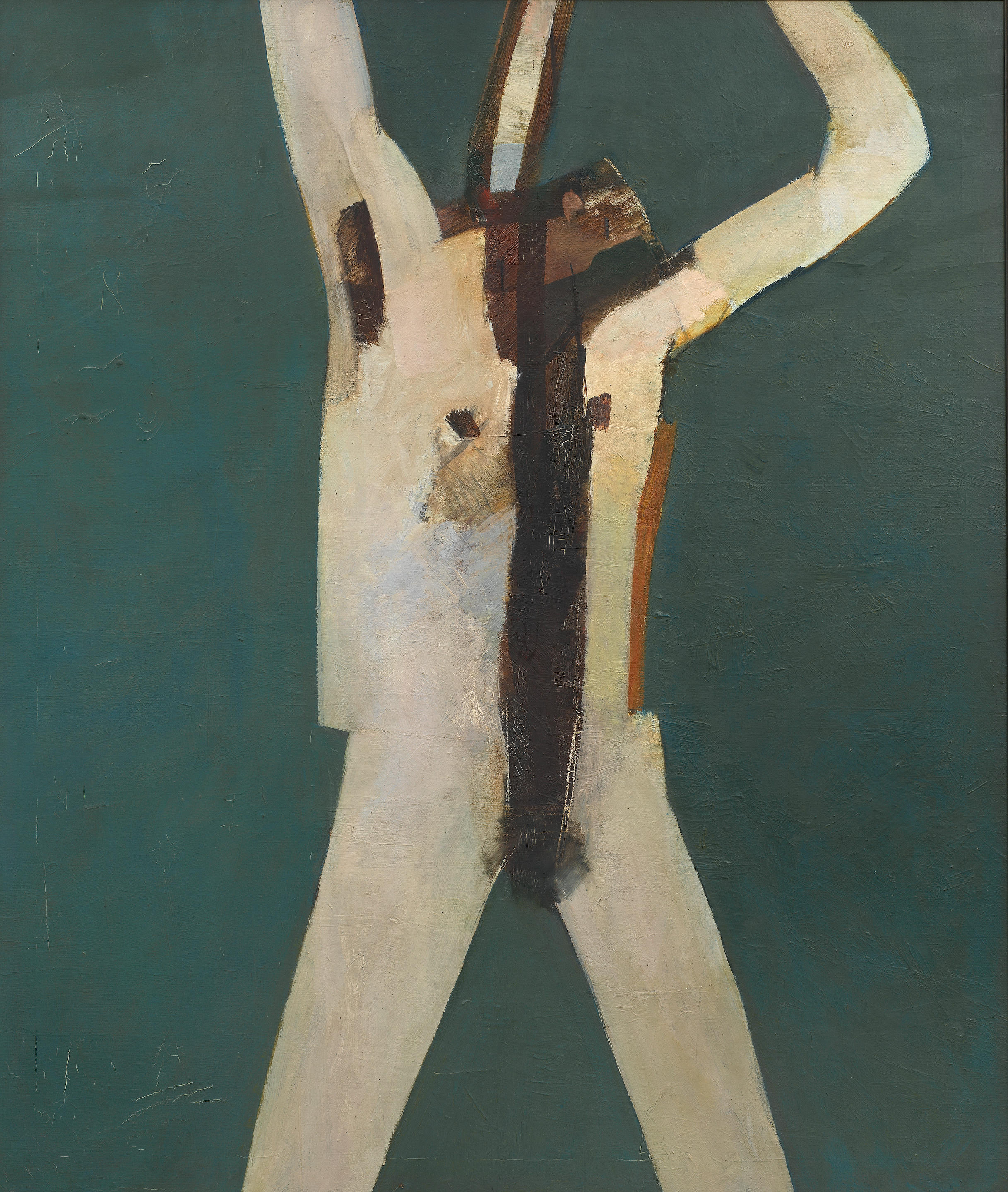
.jpg)
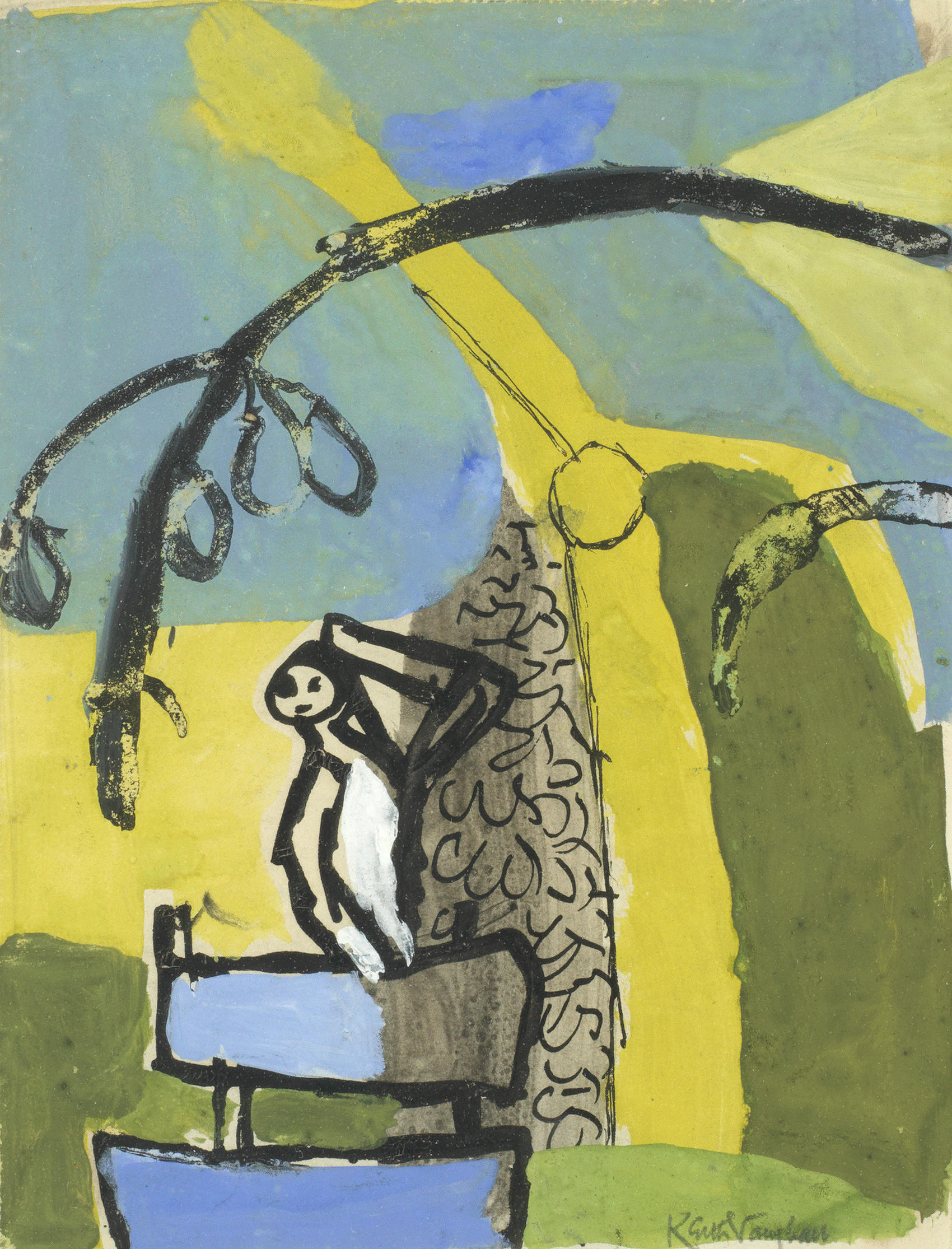


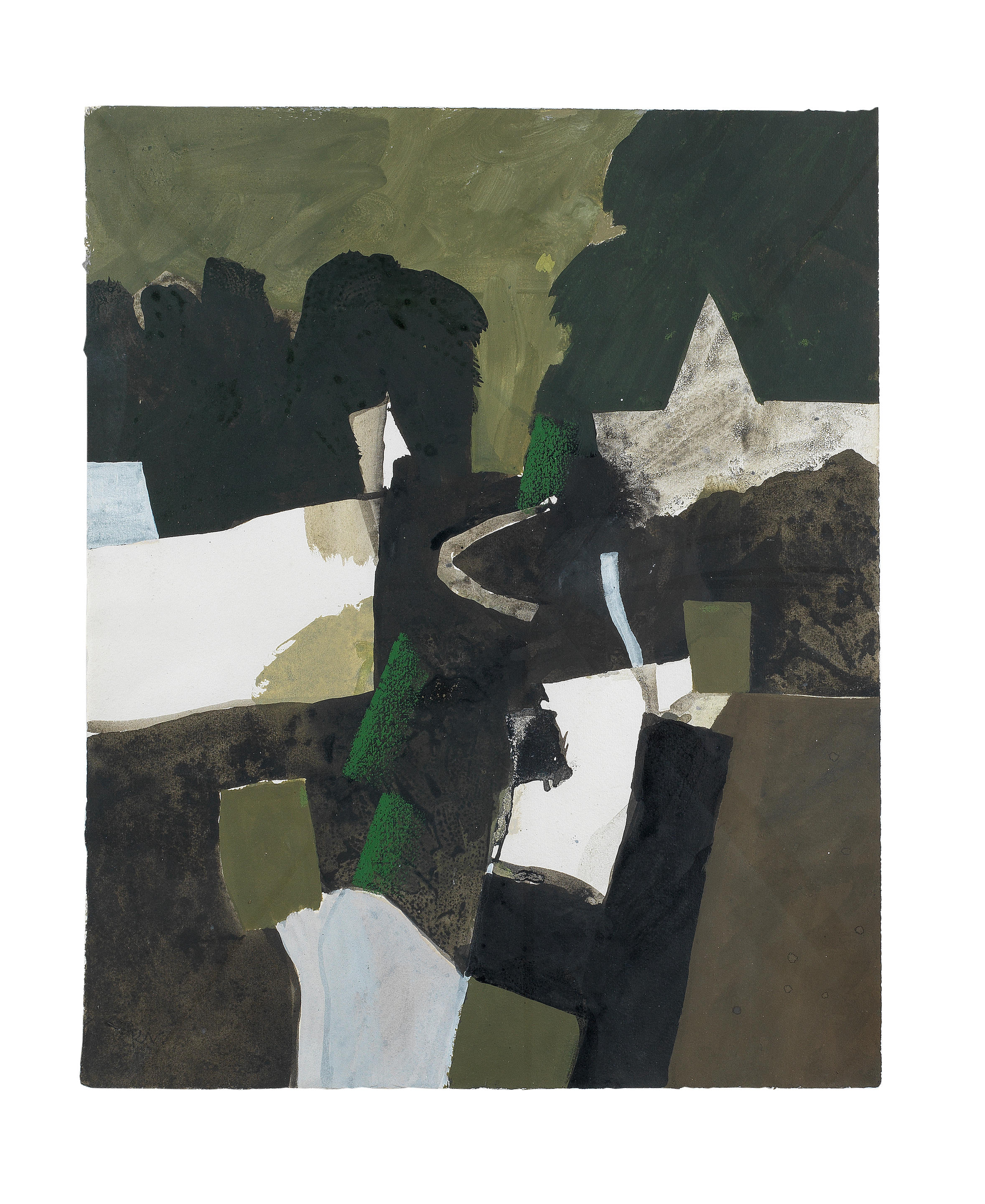
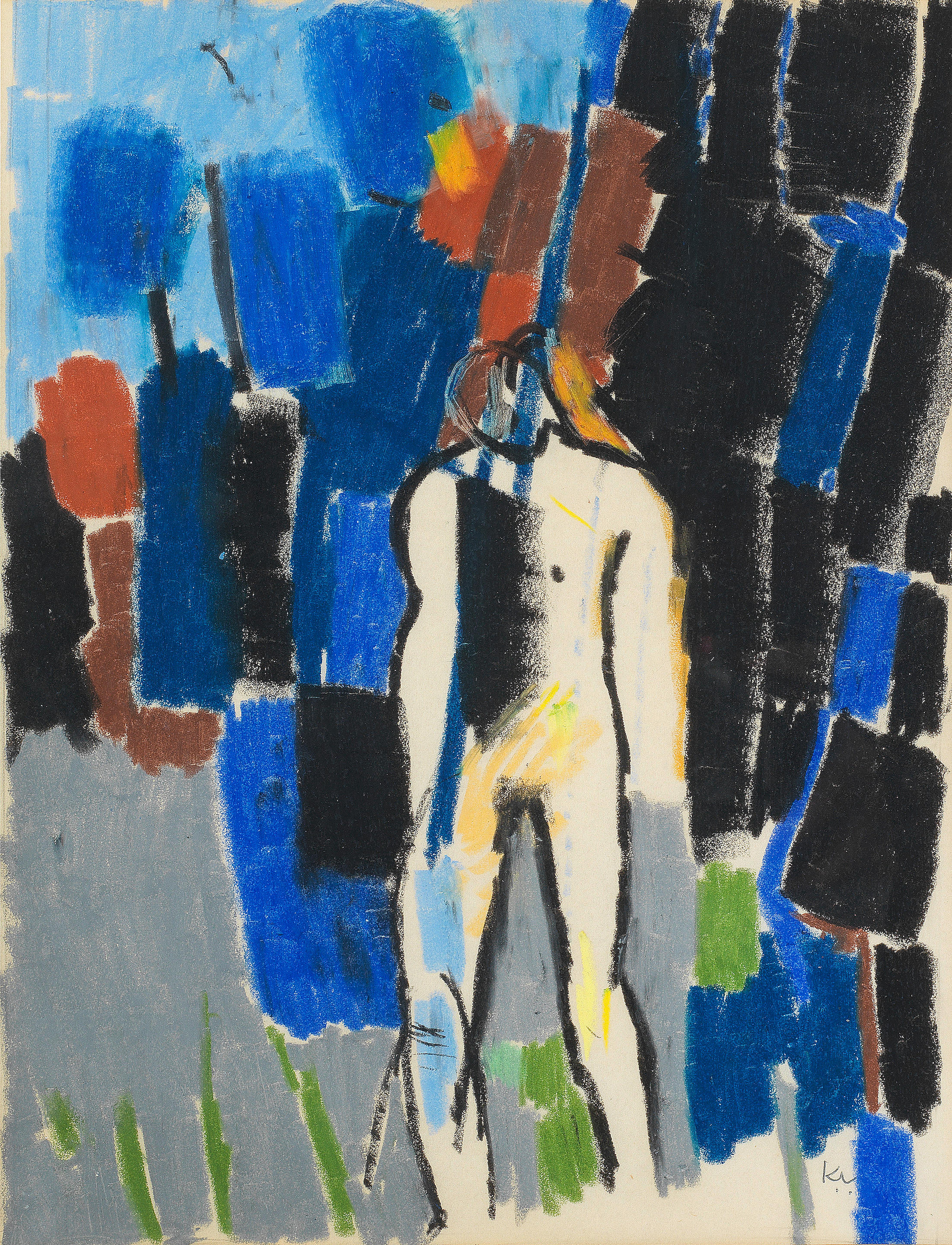





.jpg)
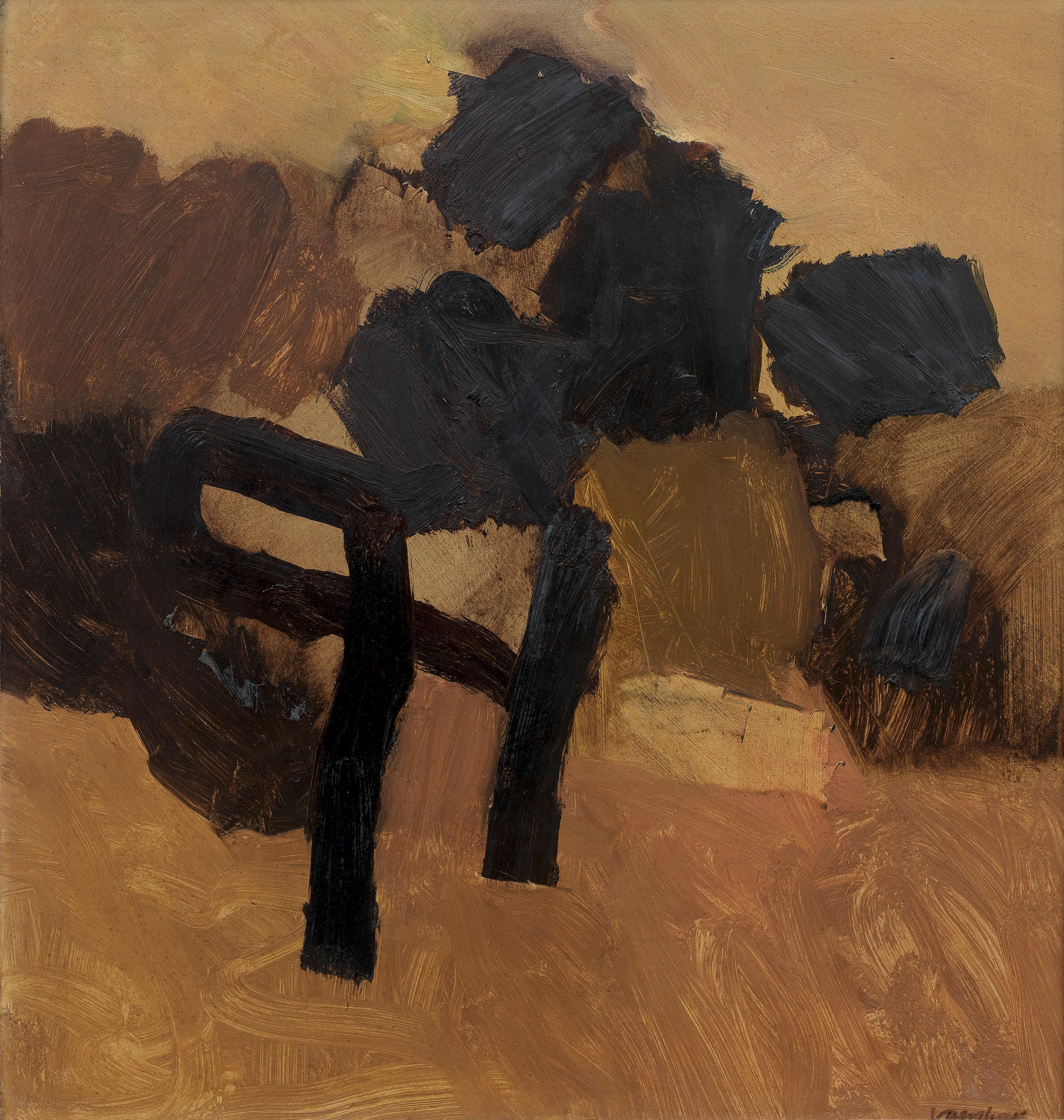
.jpg)
Testen Sie LotSearch und seine Premium-Features 7 Tage - ohne Kosten!
Lassen Sie sich automatisch über neue Objekte in kommenden Auktionen benachrichtigen.
Suchauftrag anlegen